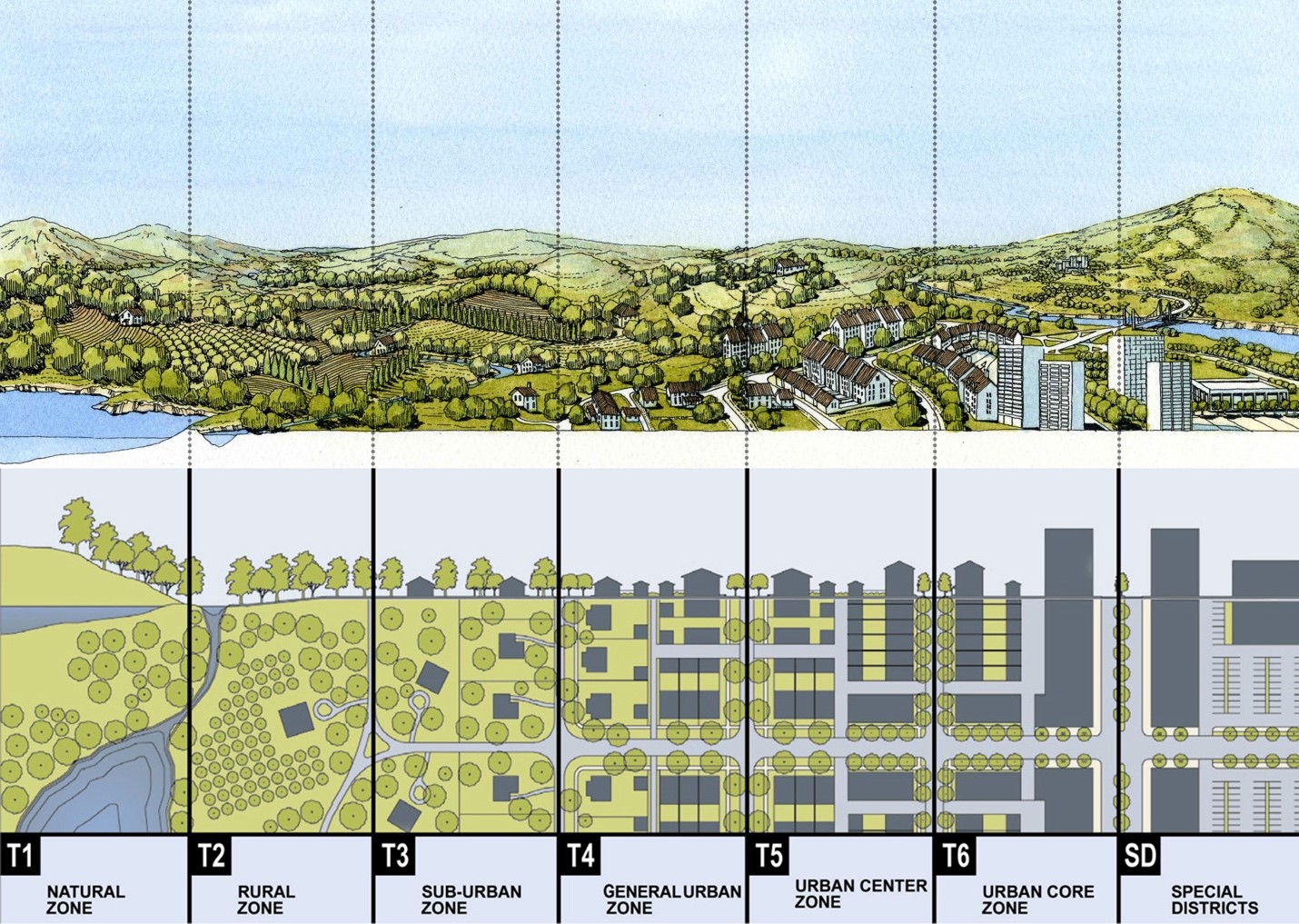A Comparison of Innovative Building Design with Implementation of Form-Based Codes: Case Studies of Denver (USA), Hong Kong (HKSAR) and Phuket (Thailand)
Main Article Content
Abstract
Concepts and measures for urban planning in Thailand provide the regulation control to land use, open space, transportation, and public utilities. It focuses on governing the usage characteristics and creating a general physical development framework rather than creating tools to meet the specific details of a particular area and promoting the social engagement process. This causes inconsistent physical requirements and stakeholders are not aware of the role and importance of urban development Form-Based Codes (FBCs) are urban planning measures that provide in-depth land use management and urban planning with the goal-setting approaches. It also represents the vision and needs of the city’s residents in order to develop the planning regulations as physical tools toward a more efficient utilization of land, rehabilitation, and promotion of the district identity and improving the quality of life of people in the city. FBCs are, therefore, in response to both the physical and social dimensions. The objective of this research is to study the concepts of FBCs and implement the FBCs to the existing codes and physical characteristics of the case study areas with the focus on understanding the characteristics of applying FBCs in the areas with different limitations. By comparing existing laws and regulations, administration, and physical planning standards of public space and building codes, the two groups of case study areas include Denver, USA where FBCs are enforced, and another group consists of Hong Kong and Phuket, Thailand, where it is possible to adapt FBCs to suit the context and limitations. The analysis of variables based on the conceptual framework of FBCs consists of 1) the concept of urban planning development, considering the duty of the legislators, social participation process and land use, and 2) the components of FBCs consists of reference planning, public space standards, building form standards, administration and specific legal definitions. The study found that Denver has adopted the FBCs concept from the beginning of the city planning process. It used FBCs as a tool for policy making, decision making, and legal regulations issued with details of public space standards and building standards consistent with the identity and physical characteristics of the area. On the contrary, Hong Kong has the main limitation: ownership of land management is owned by the government causing the lack of participation process from the public sector. For Thailand, centralized government structure resulted in the lack of integration from both government agencies and cooperation of the private and public sectors to benefit the development of the area. Physically, both Hong Kong and Thailand are likely to adopt FBCs in conjunction with the existing urban plans. By referring to land use as a base map and using FBCs as a specific plan for the public spaces and building forms which is a physical integration for the special district.
Downloads
Article Details

This work is licensed under a Creative Commons Attribution-NonCommercial-NoDerivatives 4.0 International License.
All material is licensed under the terms of the Creative Commons Attribution 4.0 International (CC-BY-NC-ND 4.0) License, unless otherwise stated. As such, authors are free to share, copy, and redistribute the material in any medium or format. The authors must give appropriate credit, provide a link to the license, and indicate if changes were made. The authors may do so in any reasonable manner, but not in any way that suggests the licensor endorses you or your use. The authors may not use the material for commercial purposes. If the authors remix, transform, or build upon the material, they may not distribute the modified material, unless permission is obtained from JARS. Final, accepted versions of the paper may be posted on third party repositories, provided appropriate acknowledgement to the original source is clearly noted.
References
Borys, H. A. (2012). Codes Study, Placemakers. Retrieved from http://www.placemakers.com/how-we
Censes and Statistics Department. (2019). Censes and Statistics Department. Retrieved from http://www.census2011.gov.hk/pdf/summary-results.pdf
City and County of Denver Community Development. (2012). Urban Design Standard & Guidelines for 9th & Colorado. Colorado, USA.
Daniel, P. (2015). Code Next Shaping the Austin We Imagine: What is Form-Based Codes. Austin.
Form-Based Codes Institute. (2019). formbasedcodes. Retrieved from http://www.formbasedcodes.org/definitions
Galina, T. (2010). Sprawl Repair Manual. Washington, DC: Island Press.
Horayangkura, V. (2011). Creating a Livable Urban Environment: Unseen Problems and Possible Solution. Journal of Architectural/Planning and Studies, 9-26.
Kan, C. H. (2012). Form-based Urban Planning Code and its implications in Hong Kong. Faculty of Architecture,The University of Hong Kong.
Ministry of Interior. (2017). Ministerial regulation No. 55 issued by virtue of the Building Control Act., B.C. 1992. Bangkok.
Ministry of Natural Resources and Environment. (2017). Natural Resources and Environment Announcement B.E. 2017. Bangkok.
Parolek, D. G., Parolek, K., & Crawford, P. C. (2008). Form-Based Codes, A Guide for Planner. New Jersey, USA: FAICP.
Phuket Office of Public Works and Town & Country Planning. (2019). Town Planning Act B.E. 2019. Bangkok.
Pinchin, I. (2017). Comparing Form-Based Codes and Urban Design Guidelines in the Central Areas of Two Mountain Resort Towns. School of Urban and Regional Planning, Department of Geography and Planning, Queen’s University.
Piromruen, S. (2000). Law and Regulation and Local Government in the US. Bangkok.
Puttanapon, S. (2018). The Shop House Façade in Historic Urban Landscape of Phuket Old Town. Vernacular Architecture and Cultural Environment, 55-68.
Rangwala, K. (2010). formbasedcodes. Retrieved from http://formbasedcodes.org/articles/design-guidelines-dont-work/
Ronghaman, P. (2012). Evaluation of Urban Planning of Thailand. Vernacular Architecture and Cultural Environment, 251-271.
Soledad City. (2012). City of Soledad Downtown Specific Plan. San Luis Obispo. California, USA.
Spikowski Planning Associates. (2006). Fort Myers Beach Land Development Code. Florida.
Taylor, N., & Arnold, A. (2011). Local Historic District Ordinance vs. Zoning Ordinance. Michigan: Michigan Historic Preservation Network and National Trust for Historic Preservation.
Thaihuam, M. (2017). Desired Physical Environment of Walking Street: A Case Study of Thalang Street, Phuket. Research and Development Journal Suan Sunandha Rajabhat University, 53-68.


